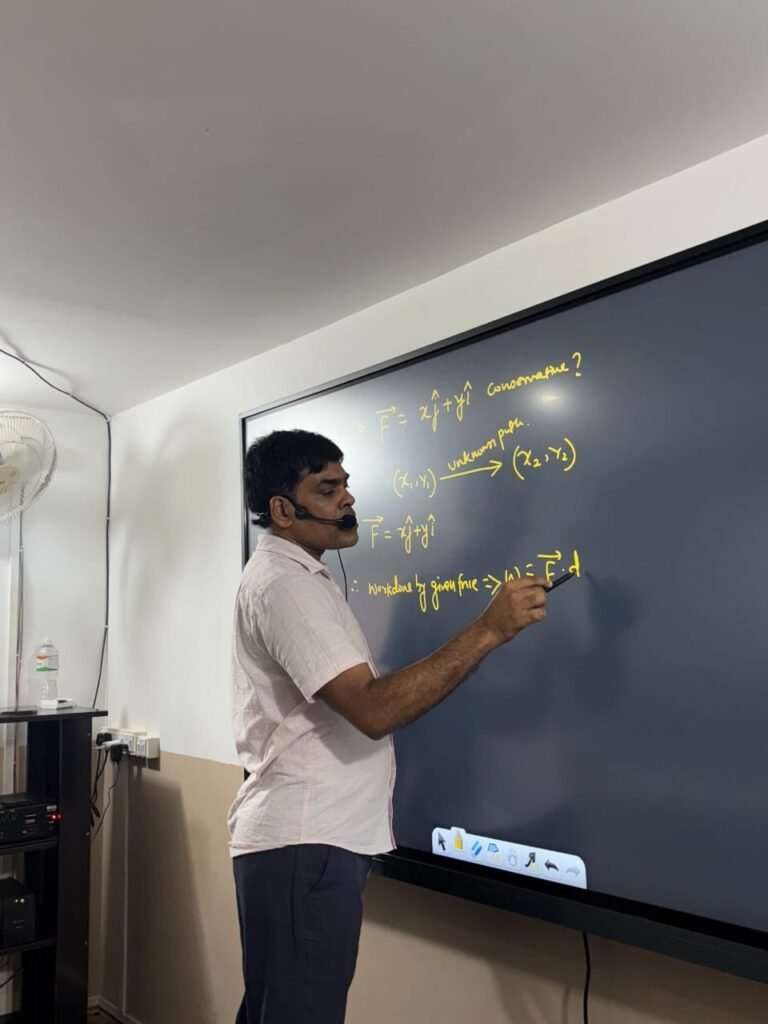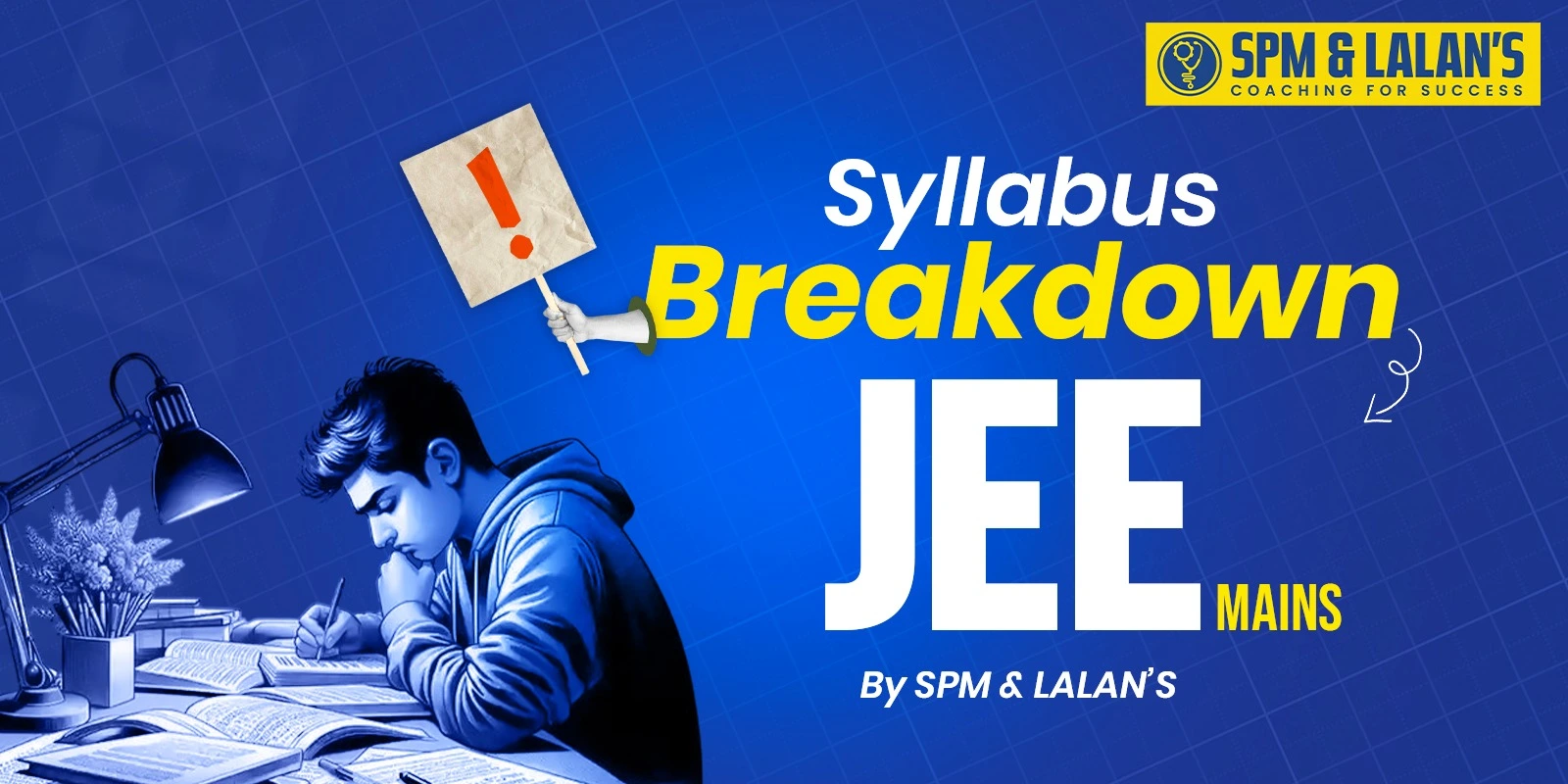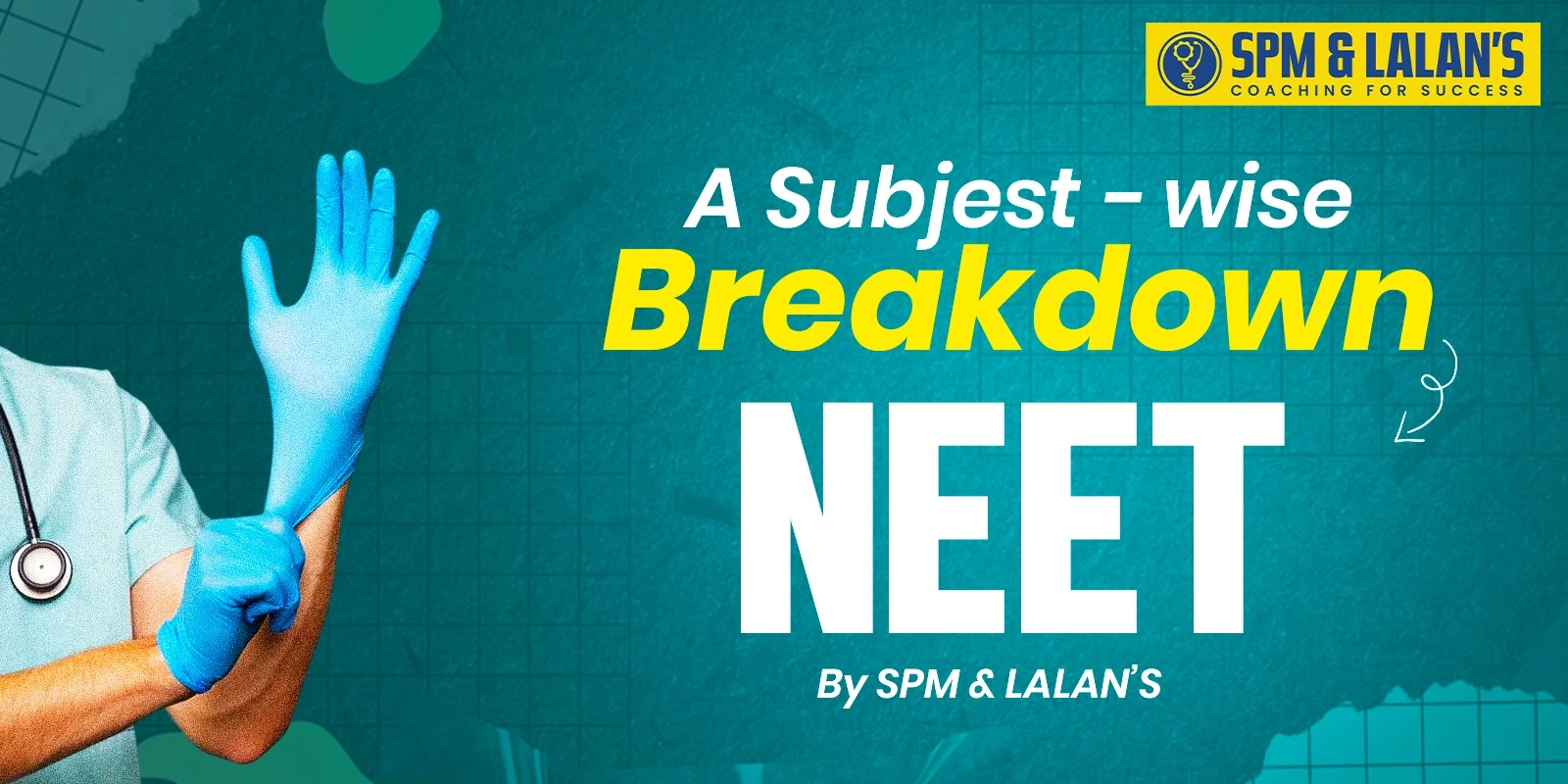When it comes to cracking JEE Main, Mathematics often turns out to be the make-or-break subject. The JEE Main Maths Syllabus plays a central role in determining how students should plan their preparation. Hence , at SPM and Lalan’s Integrated Institute, we always emphasize that understanding the syllabus is the first step toward mastering JEE. It helps you decide where to focus, how much time to dedicate, and how to strategize your revision effectively.
Overview of the JEE Main Maths Syllabus 2025
The National Testing Agency (NTA) has not yet released the official JEE Main Mathematics Syllabus 2026, but it is expected to remain almost identical to the 2025 syllabus. As per the recent trend, two chapters , Mathematical Induction and Mathematical Reasoning , were removed in 2024 and remained excluded in 2025. Hence , pattern is likely to continue in 2026 as well.
Moreover , the JEE Main Maths syllabus typically includes 14 to 16 major units covering both Class 11 and Class 12 topics. Each unit includes approximately 5–10 topics, so candidates must approach their studies with a balanced plan.
JEE Main Mathematics Syllabus 2025 – Unit-Wise Topics
Here’s the complete chapter-wise breakdown of the JEE Main Mathematics Syllabus based on the 2025 structure, which students can follow until NTA announces any update:
1. Sets, Relations, and Functions
First , Covers union, intersection, and complement of sets, power set, relations, and different types of functions including one-one, onto, and composite functions.
2. Complex Numbers and Quadratic Equations
Second , it deals with complex number representation, Argand diagrams, modulus, argument, and formation of quadratic equations with given roots.
3. Matrices and Determinants
Moreover , it includes algebra of matrices, determinants up to order three, area of triangles, and solutions of linear equations using matrices.
4. Permutations and Combinations
Additionally, it covers the principle of counting, along with problems involving P(n, r) and C(n, r).
5. Binomial Theorem and Its Applications
Also it focuses on general term, middle term, and real-life applications of binomial expansion.
6. Sequence and Series
It also deals with arithmetic and geometric progressions, along with relationships between A.M. and G.M.
7. Limit, Continuity, and Differentiability
It covers differentiation of various types of functions, limits, continuity, and applications like maxima and minima.
8. Integral Calculus
It explains integration as an anti-derivative, definite integrals, and applications like finding the area under curves.
9. Differential Equations
It includes order and degree of equations, separation of variables, and solving homogeneous and linear differential equations.
10. Coordinate Geometry
Importantly, it covers straight lines, circles, and conic sections like parabola, ellipse, and hyperbola.
11. Three-Dimensional Geometry
Also , it focuses on coordinates, equations of lines, planes, and the shortest distance between skew lines.
12. Vector Algebra
It teaches addition, scalar, and vector products, along with geometric interpretation.
13. Statistics and Probability
Moreover, it deals with measures of dispersion, mean, median, mode, and probability theorems like Bayes’ theorem.
14. Trigonometry
Lastly , it includes trigonometric functions, equations, and inverse trigonometric identities.
JEE Main Chapter-Wise Weightage for Maths
Understanding the weightage of chapters can significantly influence your preparation strategy after knowing the JEE Main Mathematics Syllabus 2026. Here’s the chapter-wise question distribution based on 2025 trends:
| Chapter | January Session (2025) | April Session (2025) |
| Three-Dimensional Geometry | 18 | 17 |
| Matrices and Determinants | 18 | 15 |
| Differential Equations | 15 | 9 |
| Vector Algebra | 12 | 10 |
| Definite Integration | 11 | 9 |
| Sequence and Series | 13 | 13 |
| Straight Lines | 11 | 9 |
| Binomial Theorem | 11 | 13 |
| Set Theory and Relations | 11 | 9 |
| Application of Derivatives | 4 | 9 |
| Functions | 10 | 11 |
| Probability | 12 | 9 |
| Limits of Functions | 10 | 9 |
| Permutations and Combinations | 12 | 9 |
| Circle | 5 | 4 |
| Differentiability & Method of Diff. | 2 | 2 |
| Quadratic Equations | 8 | 8 |
| Complex Numbers | 8 | 8 |
| Statistics | 4 | 5 |
| Hyperbola | 5 | 7 |
| Continuity | 2 | 2 |
| Trigonometric Equations | 2 | 5 |
| Parabola | 10 | 6 |
| Indefinite Integration | 5 | 3 |
| Inverse Trigonometric Functions | 7 | 4 |
| Ellipse | 7 | 9 |
| Trigonometric Ratios and Identities | 3 | 2 |
| Solutions of Triangles | 0 | 0 |
| Basic Mathematics and Logarithms | 1 | 0 |
From this, it’s clear that Calculus and Algebra continue to dominate the paper, while Geometry and Trigonometry provide the essential edge for high ranks.
Subdiscipline-Wise Weightage Comparison
Understanding how different branches of Mathematics perform year after year helps aspirants plan their study schedule efficiently which is an important part after knowing the JEE Main Mathematics Syllabus 2026. Here’s the subdiscipline-wise comparison:
| Subdiscipline | JEE 2024 (%) | JEE 2025 (%) |
| Calculus | 37.3% | 30.7% |
| Algebra | 33.5% | 39.4% |
| 3D Geometry | 13.3% | 12.0% |
| 2D Geometry | 12.3% | 15.4% |
| Trigonometry | 3.5% | 2.5% |
SPM and Lalan’s experts always advise students to master Algebra and Calculus first, as these topics cover almost 70% of the entire JEE Maths paper.
Class-Wise Question Distribution
Knowing the balance between Class 11 and 12 chapters can help students plan revision schedules efficiently.
| Year | Session | Class XI Questions | Class XII Questions |
| 2024 | April | 115 | 185 |
| January | 119 | 181 | |
| 2025 | April | 110 | 115 |
| January | 116 | 134 |
While the number of questions from both classes remains fairly balanced, Class 12 chapters usually carry slightly higher conceptual weightage.
JEE Main Maths Preparation Strategy 2025

At SPM and Lalan’s, we believe that mastering Mathematics is not about rote learning; it’s about clarity, consistency, and confidence. Here’s a structured approach to ace the JEE Main Mathematics Syllabus effectively:
1. Build Strong Fundamentals
First , start with the basics. Concepts from Algebra, Calculus, and Trigonometry form the base of advanced problems. Hence , Without strong fundamentals, problem-solving becomes guesswork.
2. Prioritize High-Weightage Topics
Second , focus on high-yield areas like Differential Calculus, Coordinate Geometry, Binomial Theorem, and Probability. Once mastered, these areas can single-handedly lift your rank.
3. Practice Consistently
Moreover , mathematics rewards consistency. Practice JEE previous year papers and mock tests daily. Regular problem-solving improves both accuracy and speed.
4. Manage Time Effectively
Also , it develops time-bound strategy by practicing full-length mock tests. Identify which topics consume more time and work on improving your pace without compromising accuracy.
5. Revise Regularly
Importantly, prepare short formula notes and revisit them frequently. Quick revisions before mock tests help retain complex concepts like integration identities or differential formulas.
6. Stay Motivated and Consistent
Remember, the JEE journey is not just about intelligence , it’s about discipline. Hence , follow a daily routine, maintain your momentum, and believe in your preparation.
JEE Main Mathematics Syllabus 2025 PDF Download
Students can download the complete JEE Main Mathematics Syllabus PDF through the official NTA website once it’s released. Until then, you can rely on the 2025 version for structured preparation.
Conclusion

In conclusion, the JEE Main Mathematics Syllabus demands structured learning, smart practice, and conceptual clarity. At SPM and Lalan’s Integrated Institute, students are guided through every stage of preparation from mastering fundamentals to solving the toughest problems with confidence. By following a planned approach, staying disciplined, and practicing regularly, you can undoubtedly score high in Mathematics and boost your overall JEE Main rank.
Also read
- How to Prepare Physics for JEE Main 2025
- JEE Main & Advanced Preparation Strategy for Assam & Northeast Students
- JEE Main 2026 Physics Syllabus: Complete Unit-Wise Guide & Study Tips
FAQs on JEE Main Mathematics Syllabus 2025
Q1. Where can I download the official JEE Main 2026 Mathematics syllabus?
You can download it from the official NTA website once it’s published.
Q2. What is the total weightage of the Mathematics section in JEE Main?
Mathematics carries 33.3% weightage, contributing equally with Physics and Chemistry.
Q3. Has the JEE Main Mathematics syllabus changed from 2025 to 2026?
No, the syllabus is expected to remain the same, with Mathematical Induction and Reasoning still excluded.
Q4. How are Class 11 and Class 12 topics divided in JEE Main Maths?
Both classes contribute almost equally, but Class 12 topics usually have more conceptual and application-based questions.
Q5. What is the best way to prepare for JEE Maths?
Start with basics, focus on high-weightage chapters, practice mock tests, and revise formulae regularly under proper guidance.



